The first electrically built submarines were built in 1888, and they have become the forefront of submarine construction ever since.
However, problems of fabricating heavy, high-strength welds soon emerged, so the manufacturers had to deal with many troubles. Manufacturers solved the problems, and the solutions became the foundation of modern shipbuilding.
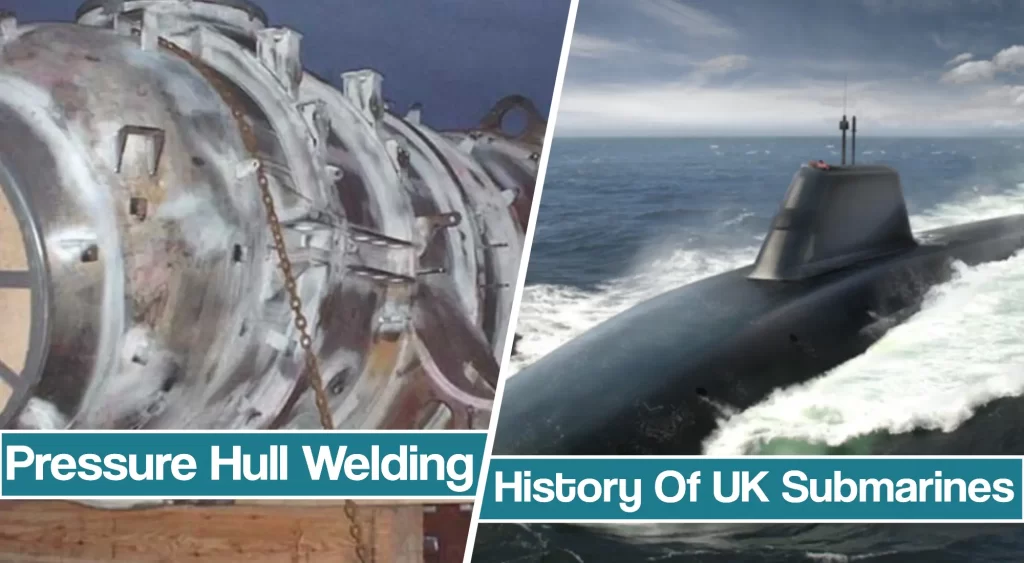
So, let’s take a look at the beginnings and development of submarine pressure hull welding.
submarine Pressure Hull Welding – How It All Began
The first all-welded ship built in the United Kingdom was completed in 1923. However, electric welding was still permitted in naval construction, and it took ten years to get more users. Thus, bolting and rivetting were still the most popular steel plate joining methods in shipbuilding.
Even though welding technology evolved quickly, rivetting was the leading joining method in the UK until the early part of World War II. Meanwhile, welding was getting more popular in submarine buildings in competing countries such as Germany. So, tremendous pressure was on the UK officials in the 1930s regarding the technological race.
That’s how it came to the increased popularity of welding in shipbuilding. However, the first arc welding process used in the shipyard involved dipping bare wire mild steel rods in a slurry bucket.
The welders utilized DC power controlled by resistance boxes, and they joined deck and angle brackets that previously had been hot forged by a blacksmith.
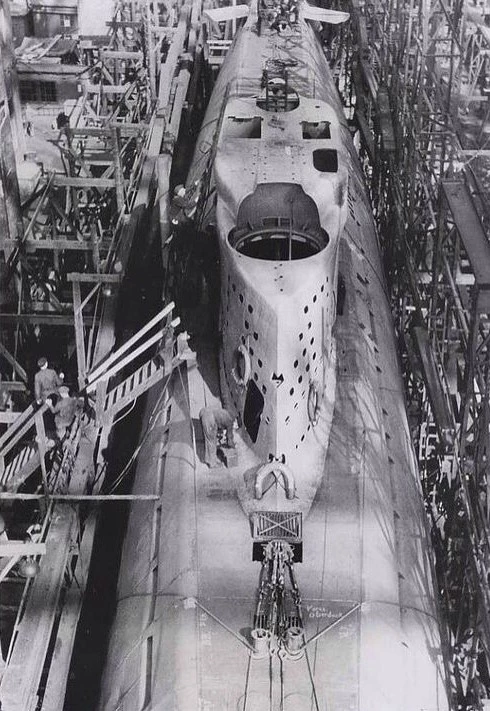
The problem of sealing the minor joints soonly occurred, so the manufacturers had to deal with problems. However, it was really odd that manufacturers didn’t include coated electrodes that ESAB’s Oskar Kjellberg discovered in 1904. As a solution, UK shipbuilders introduced pre-coated electrodes in 1930. The electrode was protected by an asbestos string which provided some strength and adhesion. Nonetheless, flux formulations could not sustain the arc via the voltage reversals, so the DC was still mainly used.
Introducing: Welding
Welding as a separate trade emerged roughly in 1935. Even though electricians were doing all the welding by then, caulkers took it up as a replacement to their traditional work of riveting and caulking.
A number of companies were selling extruded electrodes by 1938. In addition, developments in power sources improved weldability characteristics to suit specific applications. The improvement resulted in deep penetration, ease of slag removal, touch welding, and welding on the open berth.
Welding in WW II
At the start of WW II, welding was more widely used to join specific submarine parts. Mainly, manufacturers joined plate butts aligned 90 degrees to the ship’s longitudinal axis and butt joint running parallel to that axis.
These two are known as circumferential butt and seam.
To the job right, manufacturers were mainly using extruded electrodes. Extrude electrodes were helically wrapped with asbestos string and iron wire, giving good tolerance to different situations. Diameters were available in the range of 0.126 to 0.236 in., and AC could be used, even positionally.
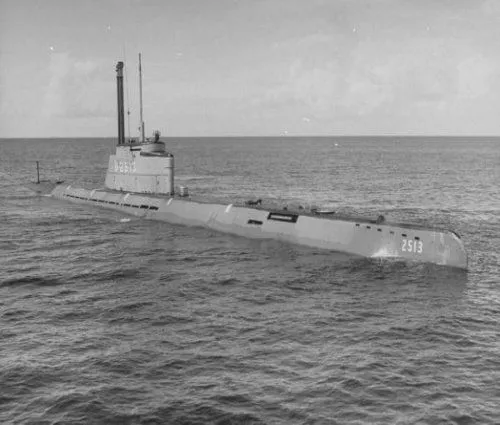
In 1943 the British Admiralty began to take random X-ray shots of various butt welds. The main goal was to reduce cracking that eventually occurred. To resolve the problems, manufacturers started preheating rods to reduce cracking.
Welding Mechanisation
Shipyards in 1942 introduced Fusarc welding where continuous coated electrode, supplied as a large coil, comprising a core wire. Helically wound binder wires were embedded in the flux coating, thus providing strength to help the flux remain on the core wire. That way, the flux was straightened, and drive rollers fed wire through long contact jaws into the arc.
Therefore the first traces of mechanized welding appeared. Mechanized welding significantly improved production during the war. The Fusarc welding machines were soon used in submarine prefabrication.
Welding in Prefabrication
The beginning of welding mechanization started the world of prefabrication of submarine hulls. Fusarc welding machines were mounted on tractors that were located at the top dead center of hull units. By driving the tractor along the joint, the manufacturer welded the seams while the unit was rotated on the rollers when joining circumferential butts.
As a result, one submarine was launched each month from the same slipway. That’s how the demands of the general war effort were being met. Meanwhile, the boats were ordered in batches with fixed designs, so the boatmakers started outfitting the hull, which took two months. Therefore, a ship could be in commission within three months of launch.
Prefabrication and welding mechanization during the war boosted productivity significantly.
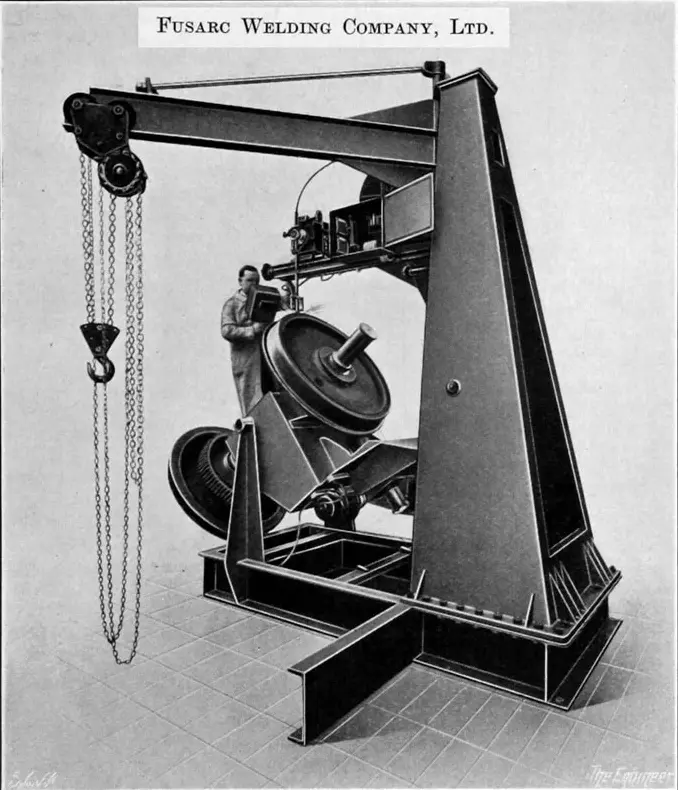
That’s how the entire trade gained popularity, and in addition, it proved strength, reliability, speed, economy, and flexibility.
However, the problems with cracking were still present but now widely recognized. Therefore, two methods were being used for inspection. Manufacturers used radiography and visual inspection by a foreman.
Radiography was one of the strictest methods as it could detect even the most minor cracks. Thus, welders were encouraged to perform by introducing a ‘clear picture’ bonus. Any welder that achieved a clear radiography picture was given compensation. In addition, the foreman had to accept the weld preparation before welding and sign records of actual joint dimensions, gaps, and angles.
Improving Weld and Material Properties
The failure of many of the World War II Liberty ships is a well-known and dramatic example of the brittle fracture of steel. Some early ships experienced structural damage when cracks developed in their decks and hulls, and three of them even split in half.
That’s why extensive investigations by the Engineering Department of Cambridge University. The researchers focused on and increased knowledge of the significance of welding design, steel chemistry, and hydrogen.
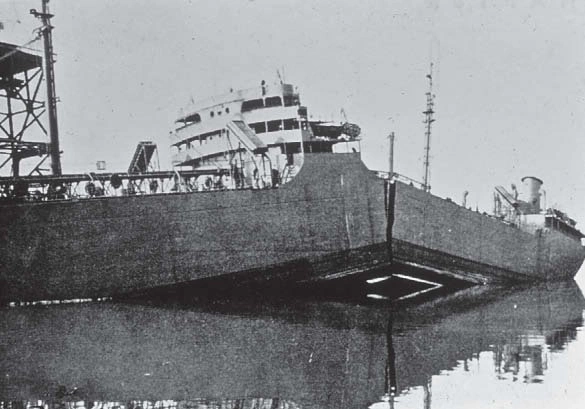
As a result, experts started controlling carbon, silicon, manganese, and sulfur levels in welding steel. In addition, many understood the significance of hydrogen and carbon. So what did the research contribute?
By understanding the properties and chemical composition, scientists introduced low hydrogen Stick electrodes. Back then, they were referred to as lime ferritic electrodes. These resulted in better tensile strength, elongation, and toughness properties in the weld metal and heat-affected zone. However, they required more remarkable welder skills to control the arc.
In addition to electrode research, new grade steel was introduced. Newly discovered steel introduced higher strengths through the ranges of A quality, B quality, D quality, and many more. However, high carbon composition emerged with some weldability problems. To deal with problems, QT28, an electrode with a lower carbon equivalent, was introduced in 1956. The latest discovered steel found great success in the Oberon class submarines.
Nuclear Submarines
The United Kingdom’s first nuclear-powered submarine HMS Dreadnought was fitted with an American S5W reactor, provided to Britain under the 1958 US-UK Mutual Defence Agreement. To design the submarine, QT35 electrodes with heat-treated steel were used. However, there were several problems.
The steel required to build the submarine was stringent heat treatment from an open hearth in the making process. Unfortunately, the very welding process degraded the properties of the heat-affected zone. That’s why rigorous controls of preheating, heat input, and temper bead sequences were developed.
Since any mistakes during the welding carried the risks of weld cracking, rigorous joint testing was carried out. Manufacturers used the drop-weight test, often called the ‘Pellini’ examination. During the trial, weld plates were subjected to severe mechanical deformation by explosions close to their surface. The result was to determine the nil-ductility transition temperature.
Ultrasonic and Radiography Testing
As we noted, radiography testing was widely used for welding joint testing in the 1940s.
However, there were very few acceptance standards at first. Therefore no problems were identified.
Everything changed in 1959 when properly standardized ultrasonic testing calibration was introduced. For the first time anywhere in large-scale heavy fabrication, weld joints were inspected by ultrasonic testing.
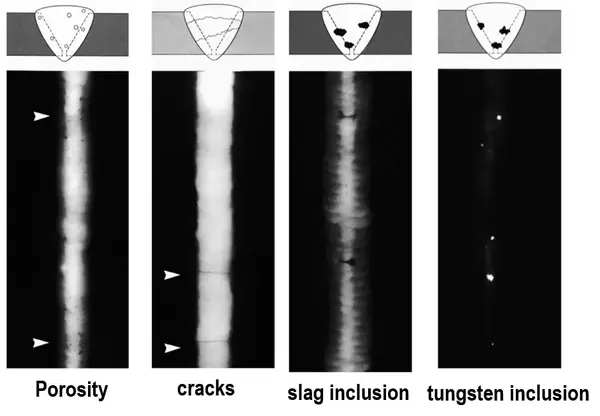
Unfortunately, ultrasonic testing led to considerable confusion and widely differing defect reports by various ultrasonic testing teams in the shipyard.
All the teams who found different defect lengths cut out the hull part and tested it to research the results. The final verdict was that the tensile strength of this deposit was 25 percent greater than the plate strength. In the past, manufacturers did that to compensate for the lower toughness of as-deposited weld metal compared with the plate toughness. However, even today, submarine hulls are designed with maximum working stress close to the plate yield stress.
What Did Ultrasonic Testing Discover
Soon after introduction, ultrasonic testing indicated lamellar tearing (cracking) in the pressure hull plating below the frame webs. At the time, there were many theories regarding the cause of tearing. Nonetheless, shipyard welding engineers deduced that the problem lay with the previously unrecognized poor properties of the QT35.
Experts then realized that residual stresses of the tee-butt connections had to be reduced. As a result, the electrodes gave rise to the distribution of lamellar, brittle, manganese-silicates, which are parts of Z quality.
The overall conclusion was that Qt35 electrodes were not comparable to HY80 steel. To resolve it, NQ1 steel, a modified version of HY80 steel, was introduced in 1969.
Further Developments
In 1967, MMA electrodes were replaced by slightly higher strength rods but improved weld metal toughness and reduced hydrogen levels. Then, during the early 1970s, ultrasonic testing used both shear and regular probes, giving better defect location and representation. Still, In the mid-1980s, a flux-cored wire with good mechanical properties was introduced, which was more used than MMA for positional work.
Submarine Welding Today
Today, submarine hulls and plates are joined using various processes. Mainly, the submerged arc is used for circumferential butts, but FCAW is used for all other weldings. In addition, MMA is currently limited to very few applications, mainly where access is very restricted.
Sources:
- http://www.madehow.com/Volume-5/Nuclear-Submarine.html
- https://metallurgyandmaterials.wordpress.com/2015/12/25/liberty-ship-failures/
- https://www.twi-global.com/technical-knowledge/faqs/faq-what-is-the-drop-weight-test-or-pellini-test
- https://www.tws.edu/blog/shipfitting/history-of-welding-in-shipbuilding/
- https://theleansubmariner.com/2011/10/04/the-quality-of-the-weld/
- https://www.australiandefence.com.au/sea/asc-develops-new-welding-technique-for-submarines




